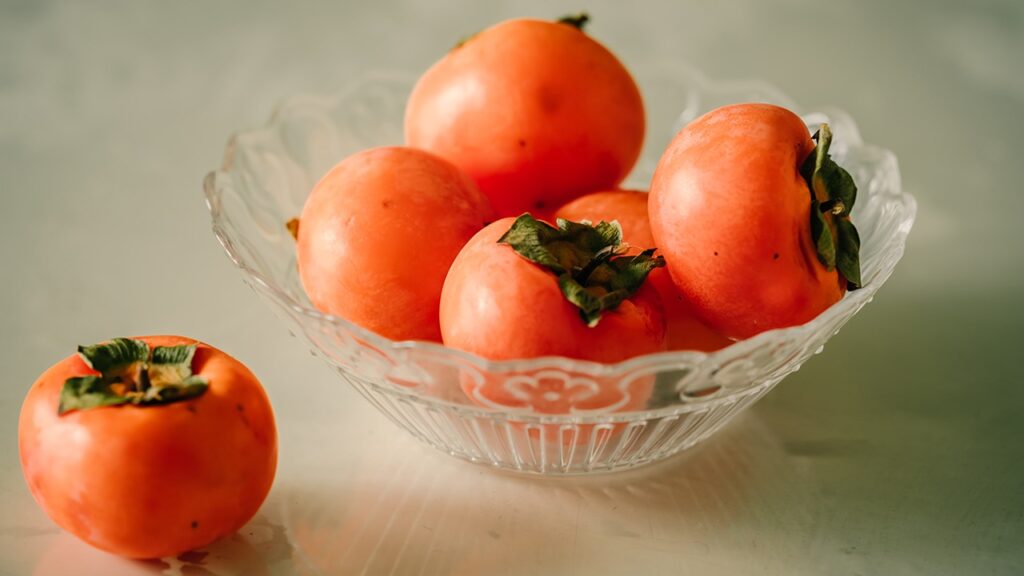
Brilliant orange persimmon fruits hang like glowing lanterns from their gray branches in defiance of winter winds that have caused their sheltering leaves to tumble to the ground.
by Sharon Asakawa
Three of the over 200 species of persimmons (Diospyros), grow primarily in the Untied States. An American species, D. virginiana is endemic to the Midwestern, southern and eastern states bearing small, but tasty fruits in chilly areas, especially where the Asian varieties do not do well. Varieties such as John Rick and Early Golden have great flavor and are hardy down to zone 4.
D. kaki includes the popular Japanese Hachiya and Fuyu varieties. Although the astringent selections such as Hachiya will make you pucker if you bite into them before fully ripe, when smushy soft it transports the taster into sweet nectar-land. To avoid the pucker, if an astringent variety is showing color but still not soft enough, put it in the freezer overnight to eliminate the astringency. While the Hachiya fruits are heart-shaped, the Fuyus typically are flatter and apple-shaped. Also Fuyus can be eaten when crunchy with no puckery after-taste.
There are some persimmons that are self-fruitful, but others require another persimmon tree to cross-pollinate and many are more productive when planted with another variety that blooms about the same time. Besides, adding a variety or two can extend harvest time from September to December. Not only do persimmons taste wonderful fresh, or dried or used in bread, cookies, jams, cakes and puddings, but their display of reddish-orange baubles is one of Mother Nature’s ode to the fall and winter seasons.
